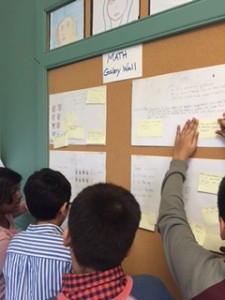With the end of Term 1, comes the IEP review and update process. While the intention is that the IEP is regularly reviewed and updated, many IEPs lay stagnant all term and are dusted off at reporting time to be updated. Teachers are excellent at setting goals, supporting goals, working with children to achieve goals, and even revising and modifying goals along the way. We often slip up in the record keeping portion of the process. How many times have we called the parent of a student on an IEP to talk about how they are doing, what they can be working on at home to support progress, etc., and not logged it in the IEP contact record? I often forgot to include that until it was IEP review time and then I would grab my communication binder and update. It is so important to keep the IEP up-to-date always. If you set a goal for a student to be able to count up to 50 and notice that they can count to 60, that goal needs to be changed on the IEP immediately! The whole point of the IEP is to have goals that are attainable, but not too easy. The hope is that we will push the student beyond their current ability level to extend their knowledge, hopefully closing the gap between where they are currently working, and the level their class is working at.
When recording communication, goals, assessments, accommodations, etc. on the IEP, I find it helpful to include as much detail as possible. Many IEP engines have drop-down menus, check boxes, etc. This might not always provide you with everything you need to paint an accurate picture of the student. Don’t be afraid to use the “other” box and explain. If you are doing something that is “outside of the box” for a student and it is working, document it!
We like to think that those students will be at our school forever and so will we, but that is not always the case. Unfortunately, families move, teachers move, people get ill, things happen. If you are suddenly not able to be at school, it is important that those records are up-to-date. Last year, I became ill and was quite abruptly sent home from work to await surgery. I was given next to no notice that I was not going to be at work, and the duration was undetermined. In the time that I was gone, two of my students moved. Had I not had their records up-to-date, I would have had to come in off of my sick leave (which might have jeopardized my leave) to collect up my data to update their records. Keeping things thorough and detailed also means your colleagues who have the student in the future know what things have been done for the student, what works, where the strengths are, etc., without having to track down previous teachers. With Lay-Offs, School Surplus, Transfers, etc., the staff in a school can change pretty rapidly. That document might be he only thing left in the school that really knows a student by the end of the staffing process in a given year.
There are lots of sites that will help with writing goals, scaffolding to ensure goals are progressing toward a larger goal, etc. It is often easy to get the IEP completed once you sit down and get to work. It is feeling the urgency and the importance that the document holds that really motivates a teacher to keep the IEP updated on paper, not just in their daily planning.







